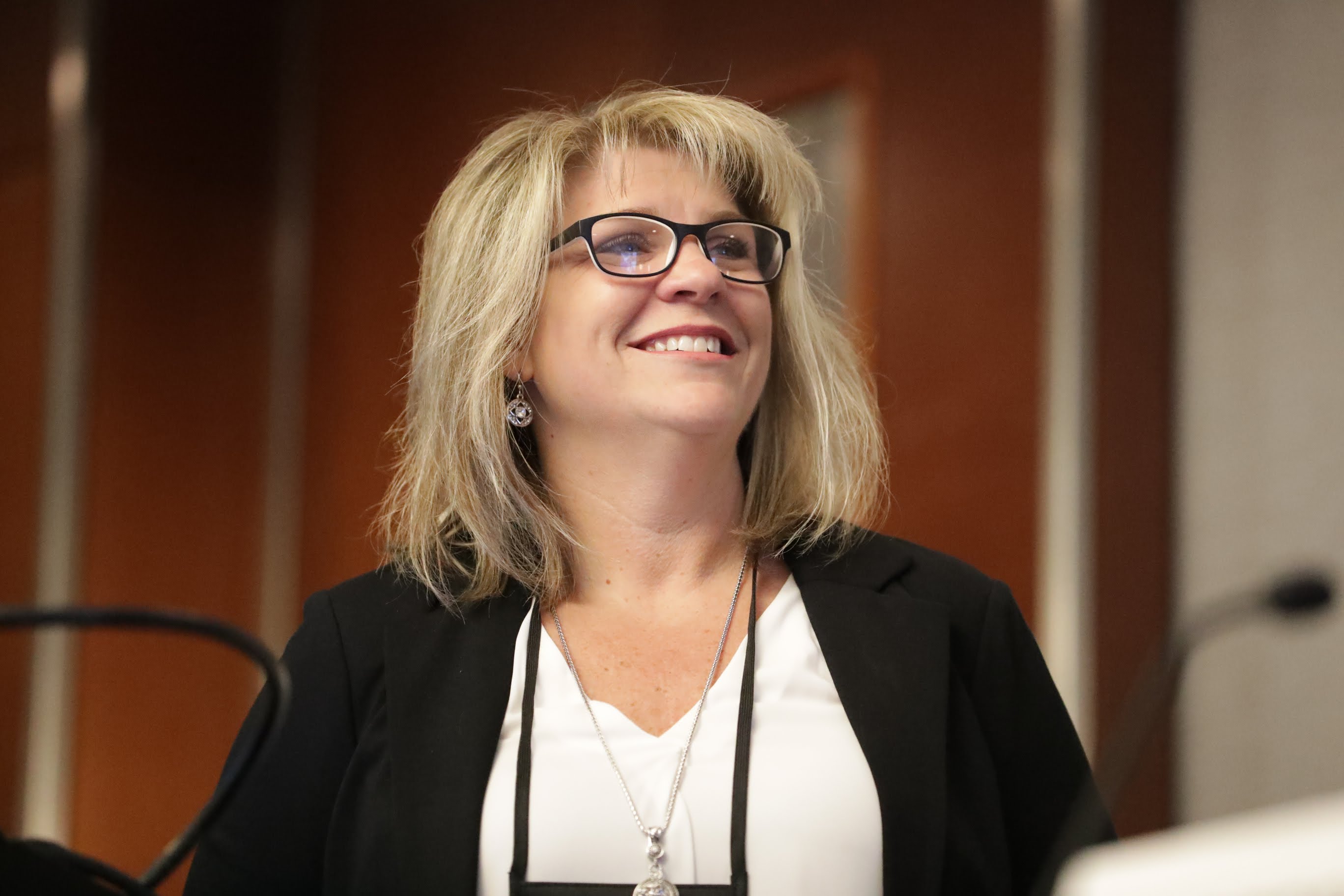Take a people-centric approach to implementing software, improving processes

Consultant Debbie Foster discusses change management at ABA Techshow 2018. Photo by Saverio Truglia.
Legal software comes out of the box missing two critical features: It needs people and a consistent process to run.
“So much of the success of technology implementation is dependent on the people and the process,” said Debbie Foster, managing partner of Affinity Consulting’s office in Largo, Florida, and ABA Techshow 2018 co-chair. “Unfortunately, a lot of my time is spent rehabbing a software implementation gone wrong. If a process is inefficient, technology doesn’t make it any better.”
During several process management sessions on Friday at ABA Techshow, panelists recommended taking a step back from using software to, instead, consider ways to make the software work better with the people around it. “This is more psychology than technology at the end of the day,” Foster said. “Oftentimes I’m taking my consultant hat off and putting my therapist hat on.”
Making changes requires tapping people’s know-how. “The path to getting something done is to make it become their idea,” Foster said during her session, entitled: “Embedding Process Through Efficient Change Management.” In many cases, she argued that staffers haven’t considered how to do things differently—especially at clerical levels, where they may not have even been asked.
“Meet with your new people often,” she said. “The newest hire sees things invisible to us, and there’s a short window before they lose that perspective.”
Foster suggests following John Kotter’s eight steps to leading change in building trust among team members. “They need to call each other out if something is not going to work,” she said. And she showed a TED video to make the point that the leader may not be the team’s key player.
“If you stay the same, there is a very good chance that in five years you will not be doing it,” she said. “LegalZoom didn’t get where they are because they operate inefficiently. They are doing that continuous improvement thing all the time.”
Other sessions echoed the people-centric approach to process improvement. During a Friday morning session titled: “Building a Predictable Process Management System,” Shantelle Argyle, executive director of Open Legal Services in Salt Lake City, Utah, advocated chatting up staff to clear obstacles—whether at the courthouse or in the office. “Sneaky data collection,” she called it.
“You are gathering data all the time without knowing it,” Argyle added, learning what gums up the process and what gets it unstuck. “Document the information that you collect while just doing your job.”
Argyle’s co-panelist, Las Vegas business lawyer Gina Bongiovi, suggested compiling staffers’ best practices in a process manual. “Ask them the best parts and worst parts about the process,” Bongiovi said. At the end, “you don’t have to be the bad guy” when insisting on following a written standard.
She suggests sorting tasks by whether they’re revenue-generating and enjoyable. Administrative tasks or daily grinds can be delegated.
Bongiovi and Roanoke, Va., consultant Britt Lorish turned a software selection primer, “Better Client Service Through Process Automation,” into a discussion of resource limitations and inefficiencies. They contend that software purchasers need to understand whether users will embrace the product.
“If you stopped and realized how much time is being wasted—and time is our widget, that’s what we sell—you have to understand where that time is being lost,” Lorish said.
“Think about the kinds of things that take 12 steps instead of six steps,” she added. “All those things that are sucking time out of your day. Do the math. Take stock of these things and understand what you are going to be gaining, what could be lost, and put a number on it.”
Follow along with our full coverage of the 2018 ABA Techshow



